Introducing Our New Roadmap: Buffer Suggestions
At Buffer, we are very fortunate to receive hundreds of feature requests every month. Our community is eager to help us improve, and it’s an absolute blessing.
We’ve experimented with different processes for incorporating user feedback and ideas into our product and keeping our community informed of real-time updates, but it can be challenging to do that well.
In the spirit of transparency, it’s important to us that we let folks know when their requests are being worked on, whether their idea is technically possible, or if there are other things we need to prioritize.
Today, I’m excited to share the next evolution of building together with our community, Buffer Suggestions.
Read on for the backstory of how we got here and why we’re so excited about our new feedback hub and transparent roadmap.
Our first transparent roadmap
Nearly eight years ago, we launched the first version of our transparent product roadmap.
It was a public Trello board with product suggestions from users organized by stage of development. Anyone could vote and leave comments on a suggestion.
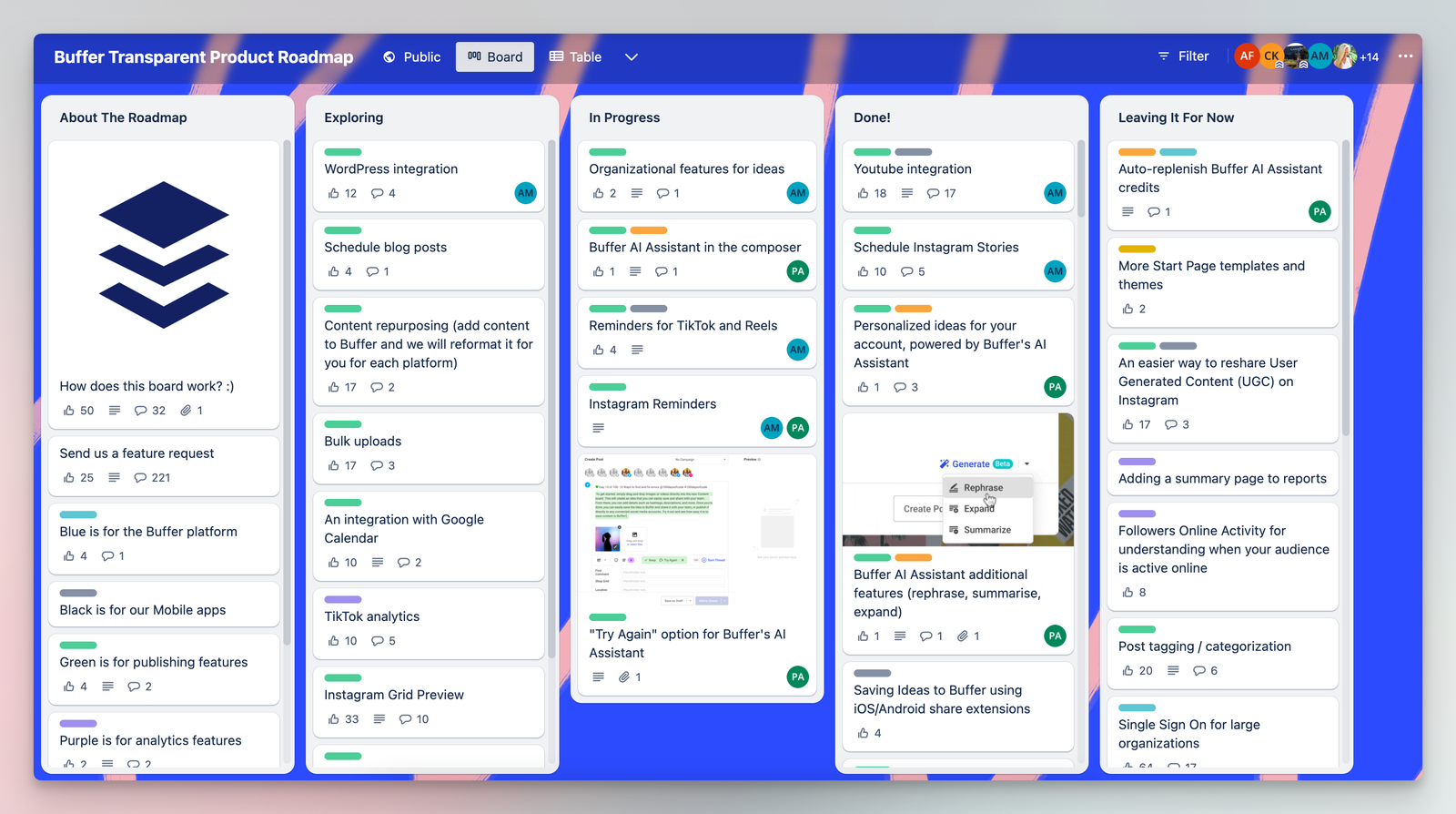
To submit a suggestion, you’d have to fill out a Typeform that was embedded on our website.
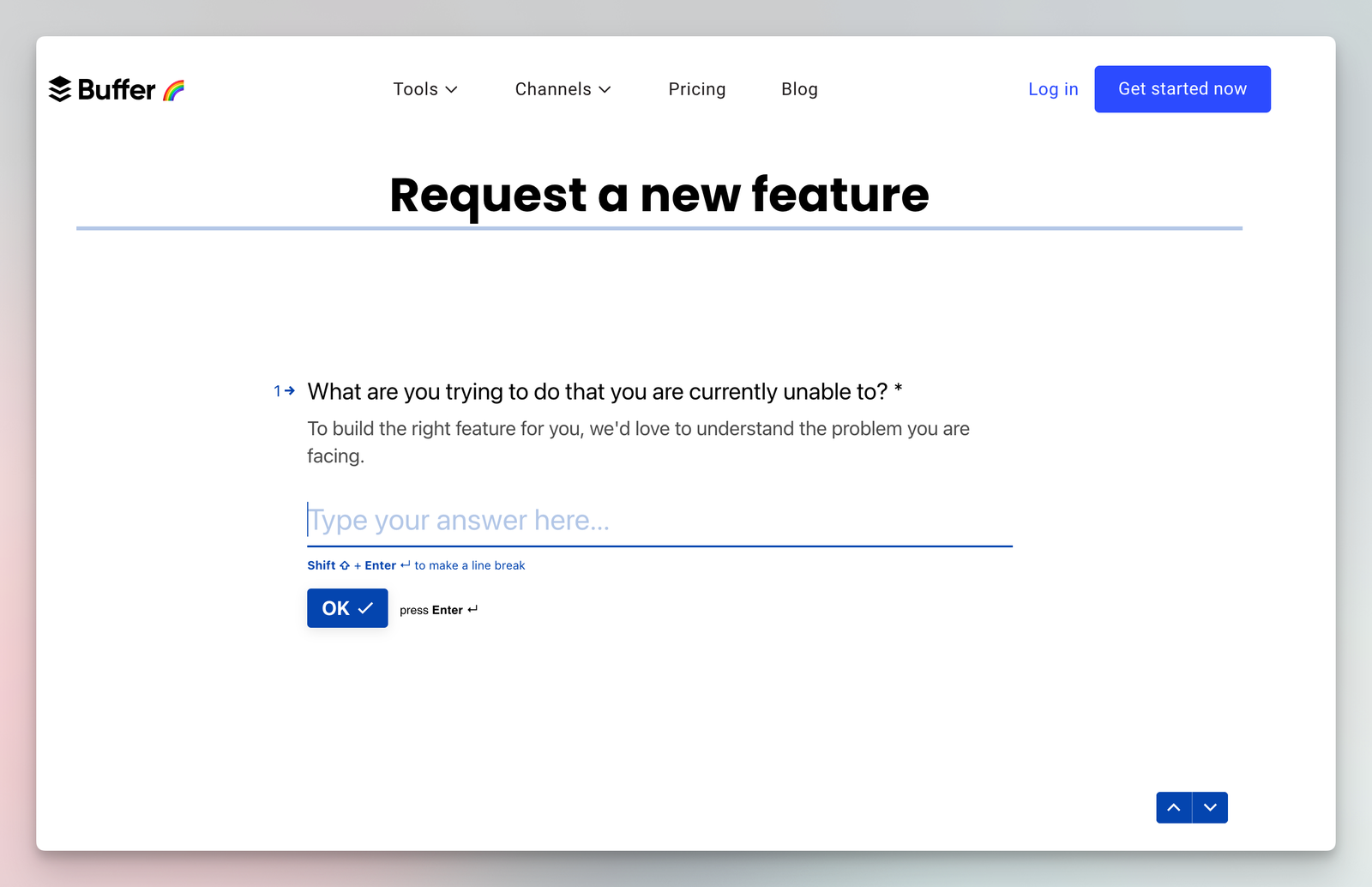
We connected this Typeform to an internal Slack channel so that we could keep an eye on all submissions and have discussions about them.

Finally, if we decided to explore a feature request, we would add it to the transparent roadmap. Because of the volume of requests we received, only a very small percentage of requests would make it to the roadmap.
It wasn’t the best process
This system of collecting and managing feature requests worked fairly well, but over time we started to identify some flaws.
Duplicate feature requests.
Because we didn’t publicly share every feature request, we ended up getting the same request from different people over and over again.
Identifying who requested the feature.
When considering whether to build a new feature, it is helpful to know who the feature is for. Currently, there was no way for us to connect a feature request to the user who shared it, beyond manually looking up their email address in our database.
Keeping users informed.
After submitting a feature request, the user didn’t receive any follow notifications to let them know about the status of the request. Did we see it? Is it being worked on? Has it been declined? With such a large number of requests, it was virtually impossible to keep everyone posted on how their request was being handled.
A renewed focus on community and a new task force
This year, we identified our community as a priority for our team.
Why?
We have a small marketing budget and no salespeople. Therefore, we rely heavily on people having positive experiences with our product and our team and then recommending us to their friends to others.
Taking care of our community and making sure they feel connected to us helps build a better product, grow our brand, and it’s also just the right thing to do.
Our CEO, Joel Gascoigne, is one of the leaders behind our renewed community efforts. To get things rolling, he created a new project and taskforce to revamp how we collect and work with feature requests. The task force included Brandon from our Product team, Adam from our Advocacy team, Sofia from our Design team, and me, from our Marketing team.
A fun, cross-functional crew!
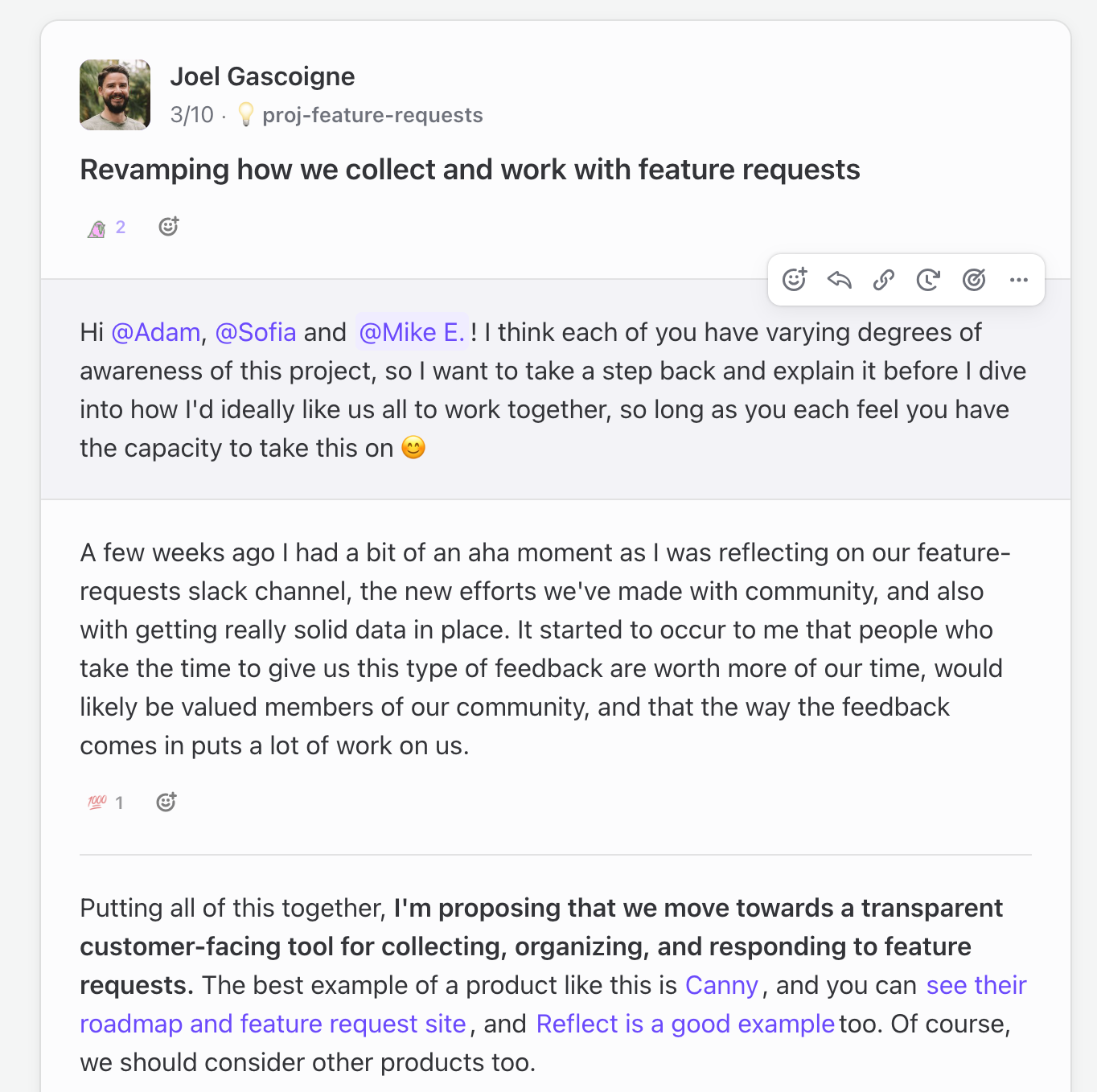
The project involved identifying and implementing a new, transparent, customer-facing tool to replace the makeshift system we’d created using Trello, Typeform, and Slack.
After doing some research, we landed on featureOS.
With featureOS you can centralize, organize, and respond to customer requests in one place. There are a number of other tools that are similar but we chose featureOS because:
- They were very responsive to our feedback. They even built a new feature for us!
- Their pricing felt reasonable for our needs.
- They offer a number of integrations.
- Their product felt intuitive.
With this new tool, we set about creating version 2.0 of our transparent product roadmap.
The most exciting thing about our new transparent roadmap is that it’s, well, even more transparent!
You can see every feature request that has been submitted by the community. You can vote or comment on your favorite ideas. And, of course, you can submit your own. You can also choose to get notified when a feature goes from being “Planned” to “In Progress,” or “In Progress” to “Complete.”
And best of all, you can use your Buffer login credentials to do it all.
Sharing your feedback and ideas
Anyone can share a suggestion or vote on existing suggestions by going to suggestions.buffer.com. Existing suggestions are sorted by the most upvotes, so the most popular suggestions will be at the top.
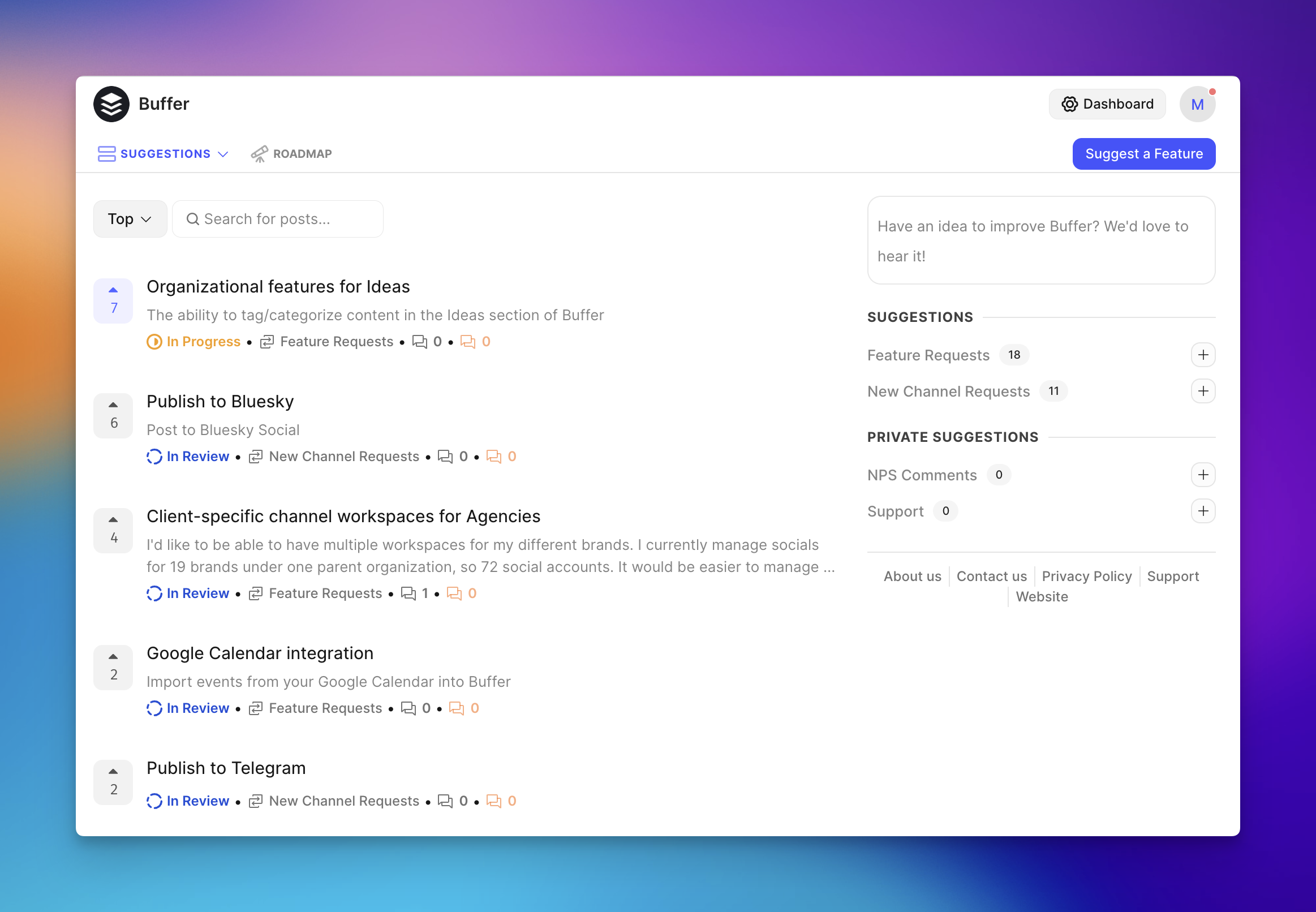
You can also sort by recency, product development stage, and votes by you.
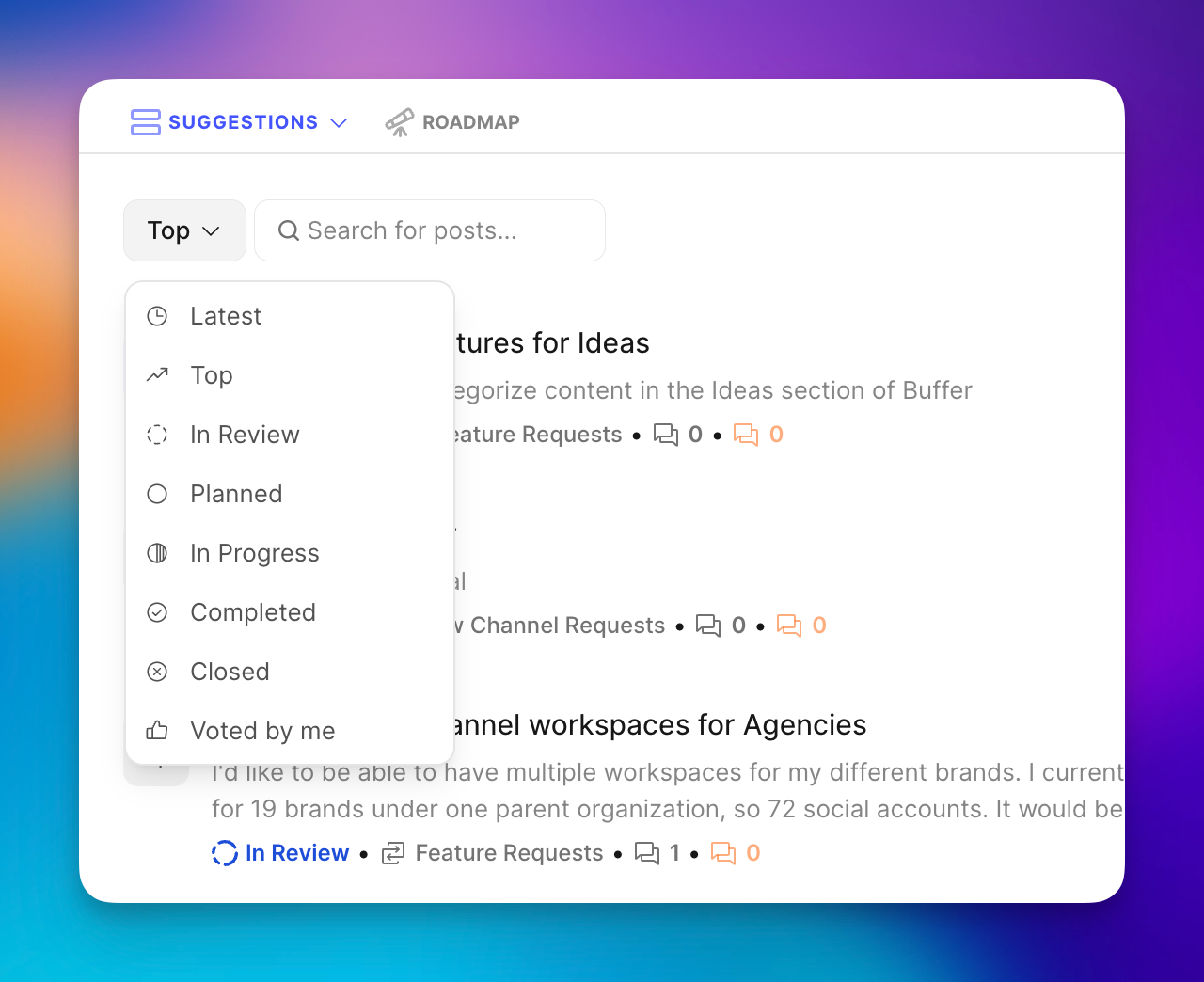
All new suggestions are automatically categorized as “In Review”. This gives other users the opportunity to upvote the request and our team a chance to consider if and when to add it to our product roadmap!
To add your own suggestion to the board, hit the Suggest a Feature button and fill out the form.
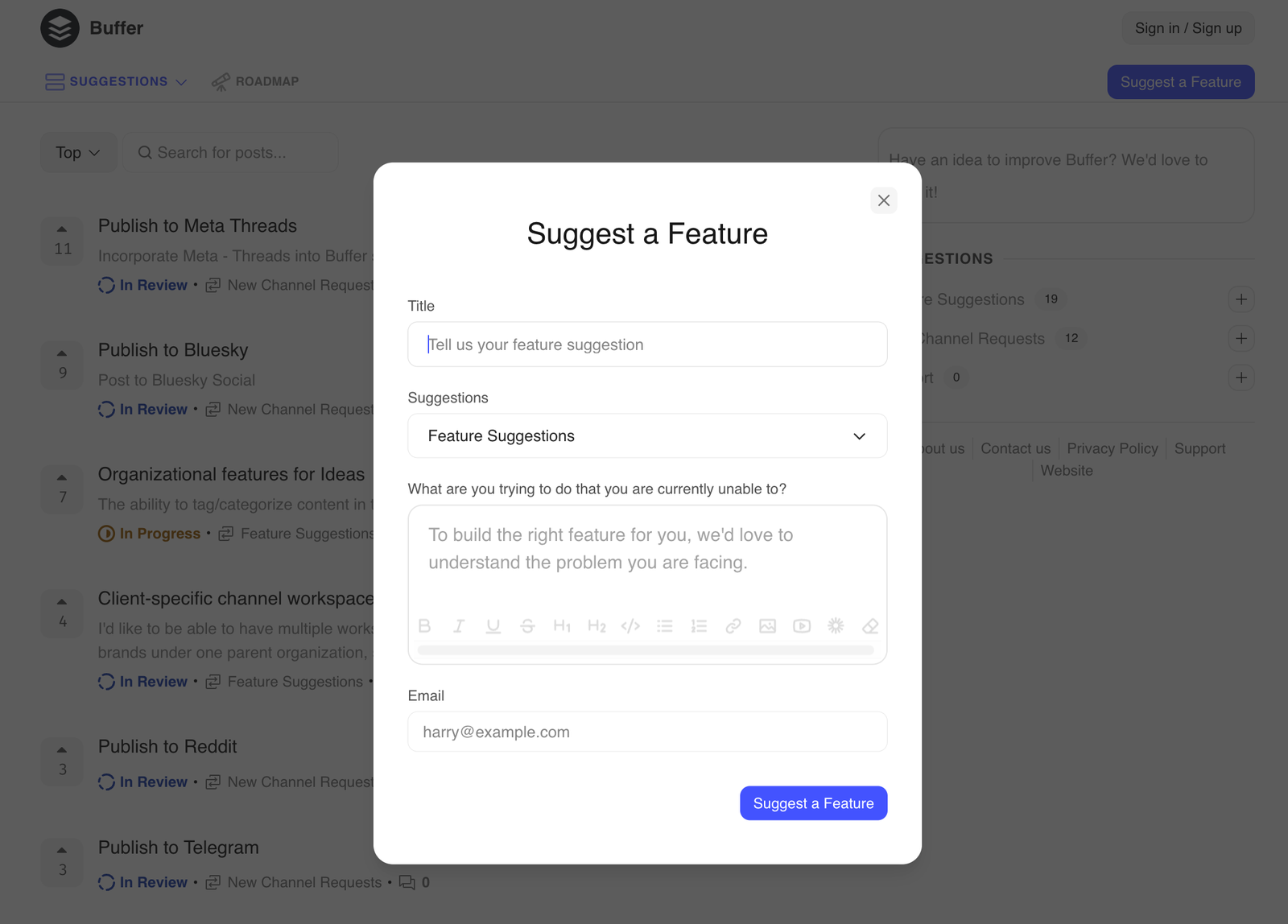
Viewing the product roadmap
You can see how the future of Buffer is shaping up by switching to the Roadmap view. In this view, suggestions are sorted into Kanban-style columns. You can comment, vote, or subscribe to a post from this view, too.
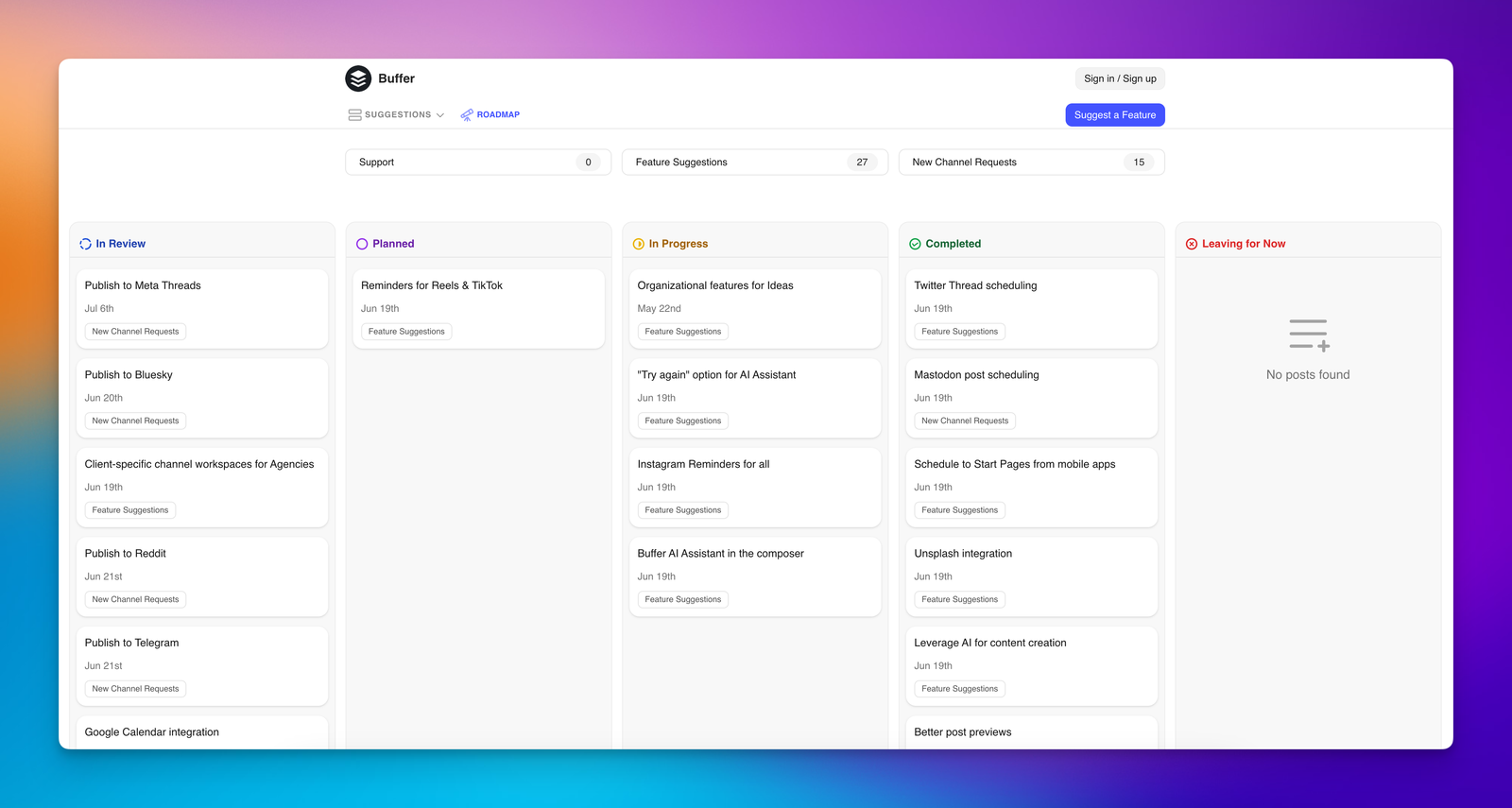
Getting notified about our progress
When you submit a suggestion, you’ll automatically receive an email whenever someone comments on the suggestion or its status changes. You can also subscribe to other suggestions to stay up-to-date with any changes.
Over to you!
What should we build next? We’d love for you to help us shape the future of Buffer by adding your votes and suggestions to our new roadmap. We can’t wait to see your ideas!
https://buffer.com/resources/transparent-product-roadmap-v2/